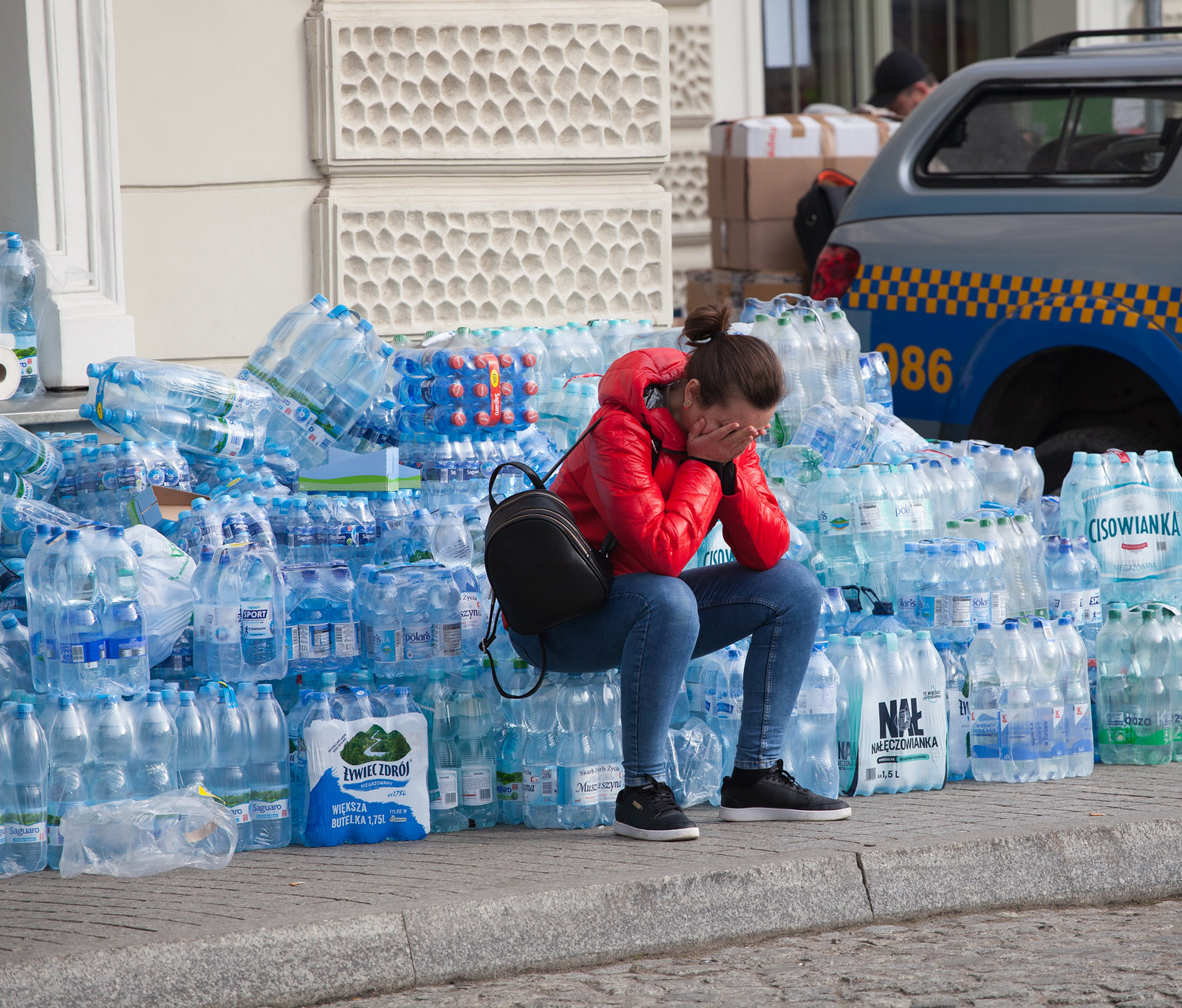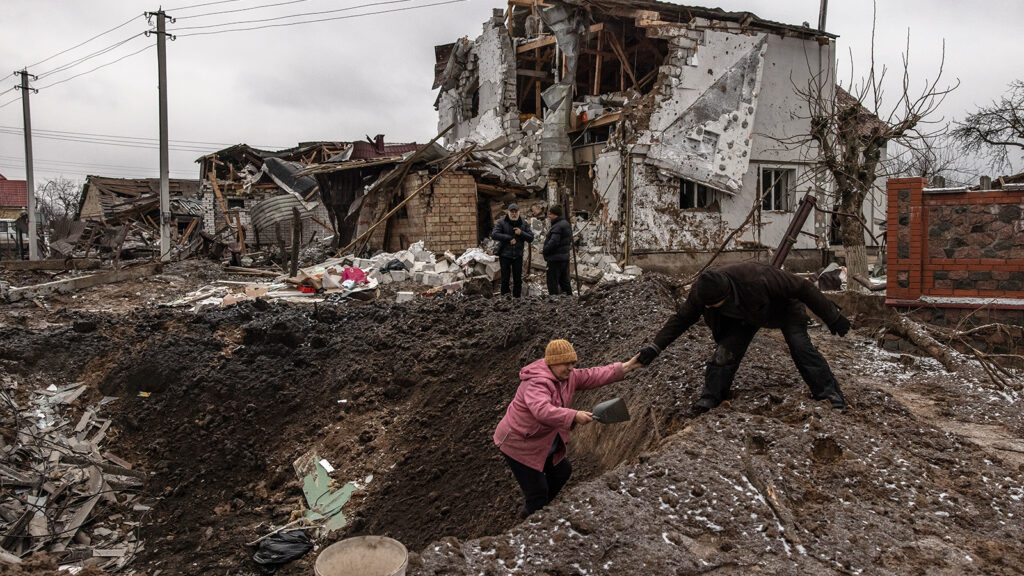
A Ukrainian refugee sits after crossing the Polish border to escape the Russian military. In the current climate, employees on the frontlines need a different level of support when compared to more indirectly affected colleagues.
Two years of a global pandemic have taken a toll on people’s well-being. Layer on other shocks and stresses such as wildfires, floods, societal unrest and now the invasion of Ukraine and it’s no wonder business leaders worry about the cumulative effects on employees’ mental health.
In this interview with Dr. Wolfgang Seidl, Mercer Marsh Benefits’s Workplace Health Consulting Leader in the UK and Europe, we discuss which employee segments are most at risk now, how to support staff during crises, and preparedness for well-being in the long term.
CERNIGOI: Which employee segments are most at risk now for mental ill health? What can employers do?
SEIDL: One important step is to think about the spectrum of employee needs depending on exposure to a crisis. In the current climate, those on the frontlines need a different level of support when compared to more indirectly affected colleagues. From a psychological point of view, there is a risk of vicarious traumatization if you treat everyone the same way.
The former group includes employees in Ukraine, those who have family or close friends in Ukraine, those who have lost loved ones during the invasion, as well as affected employees in Russia. Frontline employees also include those responding to a crisis, such as doctors and nurses. Offering access to an Employee Assistance Program (EAP) is vital for this population, including critical incident stress management or crisis management as an add-on to EAP.
A second group potentially needing support are people hosting Ukrainian refugees. They will be witnesses to the trauma of those directly affected and may need counseling themselves. Self-care is also crucial for helpers, who can burn out quickly if they take on more than they can cope with, or if they are not realistic about what they can control or achieve.
Then you have the vast majority of employees who are indirectly affected, such as people in neighboring countries or those concerned about the economic fallout of the invasion. What can employers do for them? Offering tools and resources in the moment, like resilience training, can help. But more critical is preparing ahead for a crisis. Thinking of the people risk aspects in business continuity plans is vital in both responses and preparedness phases: How do you communicate with family members? How do you mobilize the team? What does recovery look like? What are your vulnerabilities? Do existing crisis procedures consider people risks?
Preparedness requires looking at the basics: making sure the organization fosters a psychologically safe environment, training managers to spot warning signs, and — as employers are well-placed to counter stigma and raise awareness — making it easier for employees to care for their own and others’ mental well-being.
Consider Evolving EAP Offerings
CERNIGOI: After years of low take-up, we saw spikes in demand for EAP services during COVID-19, and some providers have been slow to react to the current crisis. How can organizations improve EAP effectiveness?
SEIDL: The counselors EAPs use are often gig workers, and while this can enable providers to ramp up supply quickly, a large-scale event such as COVID-19 puts pressure on the system. The result is long waiting times for support via the EAP, but it is providers’ contractual responsibility to know about other resources so they can make onward referrals.
One thing companies can do is to ensure EAPs make employees aware of what else is available (such as charity helplines, local language support) should the EAP provider not be able to meet demand. Now is the time to ask EAPs about their disaster capabilities to ensure their trauma counseling model is appropriate for the firm’s employees (some models were originally designed for police or armed forces and need to be adapted) and to mitigate the risk of long wait lists before a crisis happens.
If employees trust their employer as careful guardians of sensitive information, companies can identify people most at risk and provide early support.
EAPs are, however, very good at helping employees manage day-to-day stresses if employers ask the right questions. Really engaging with the data can take the pulse of the organization and what is on employees’ minds. For example, an organization can ask how many people got in touch about financial well-being if they switch pension providers, or how many — and in which departments — called about stress after an M&A deal.
The Effects of Cumulative Stress and Languishing
CERNIGOI: The latest shock over Ukraine comes after two years of coping with a global pandemic. How does cumulative stress affect us?
SEIDL: Cumulative stress is real, and one way it can manifest is a feeling of what organizational psychologist Adam Grant calls languishing. We all wanted to start celebrating again as we learned to live with COVID-19, and then came the invasion of Ukraine. We see people feeling a form of despair, anxiety and lost sense of belonging. At one extreme, some people feel fine or are even flourishing; at the other end of the spectrum, some people may experience depression if they have a higher pre-disposition to mental ill health due to life history and circumstances.
But all of us respond to severe and prolonged periods of stress — it is a normal response to an abnormal event. If employees trust their employer as careful guardians of sensitive information, companies can identify people most at risk and provide early support.
The majority of people lie somewhere in the middle and will not have post-traumatic stress disorder (PTSD), which is very severe and linked to a specific experience like witnessing a terrorist attack, an act of war, domestic violence, or prolonged periods of time in intensive care due to COVID. We need services that are able to spot signs of PTSD and help affected colleagues with evidence-based psychological treatments.
How Employers Can Offer Support
Yet, on a more general level, we can draw lessons from managing PTSD to counter languishing, as social connection is the single biggest preventative factor in diminishing or even avoiding some PTSD symptoms. Hence cultivating a sense of belonging in your organization and being purpose-driven are important ways in which companies can support employees today.
The shining stars will be the companies that create a purpose everyone can get behind. Altruism, which can take the form of donating funds or donating skills, is another powerful tool for processing complex trauma. Lessons about what worked from shocks like 9/11 and the pandemic will work now: getting people involved in helping colleagues in Ukraine and Russia, sending supplies to refugees.
CERNIGOI: What can employers do to support the well-being of supply chain partners and communities?
SEIDL: Building relationships with and tapping into networks of support that exist in the community (like local charities or local support groups) is an important aspect of resilience. Equally, just as employers are drawing on pockets of support that exist in communities, they can also contribute to strengthening those pockets of support. People are craving warmth and meaning. Supporting the community where the organization is located or operates is one way to pull employees out of the state of languishing. So be creative, listen to employees and find out what entities exist around you and how the company can be useful in its community.









